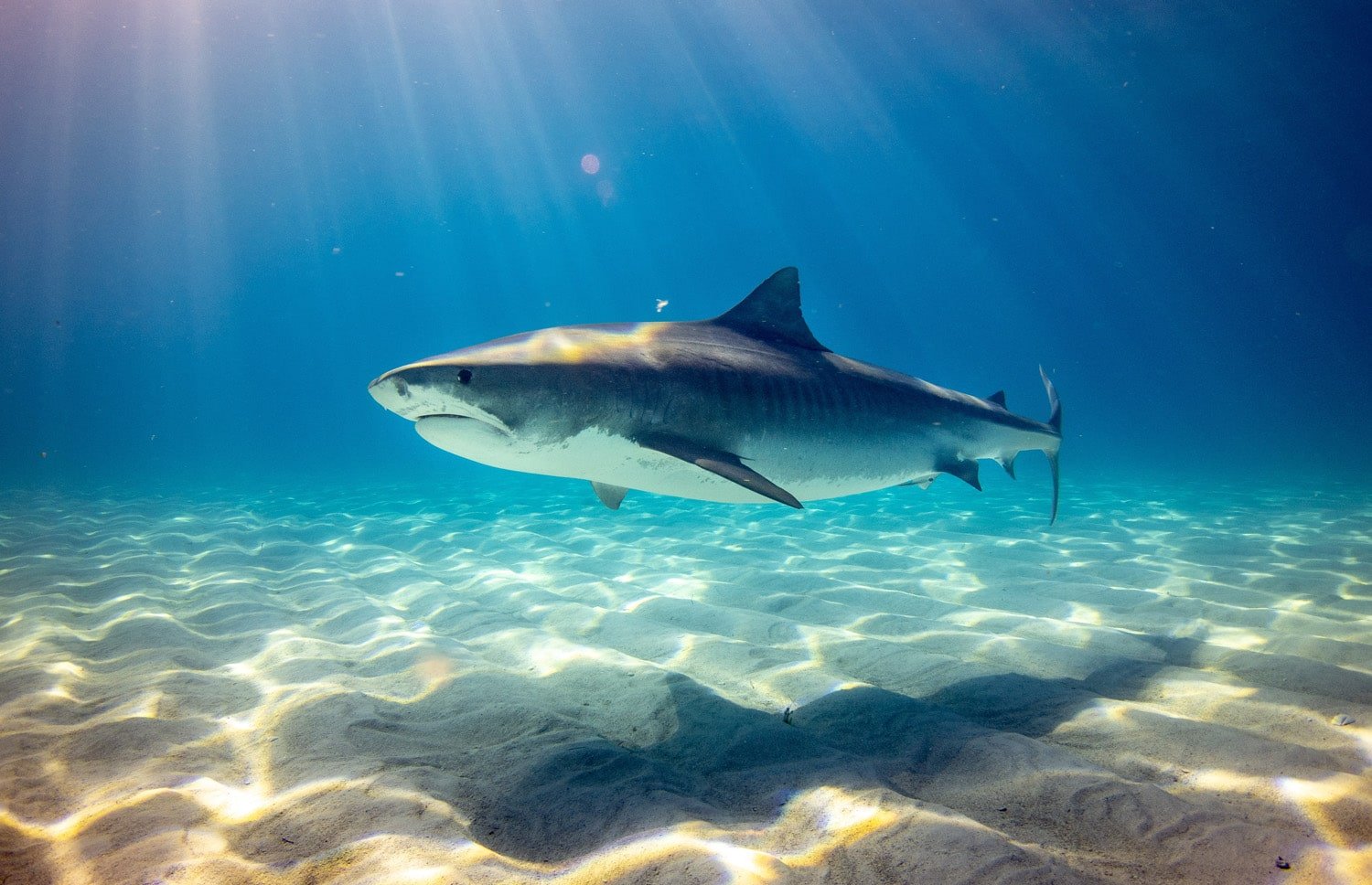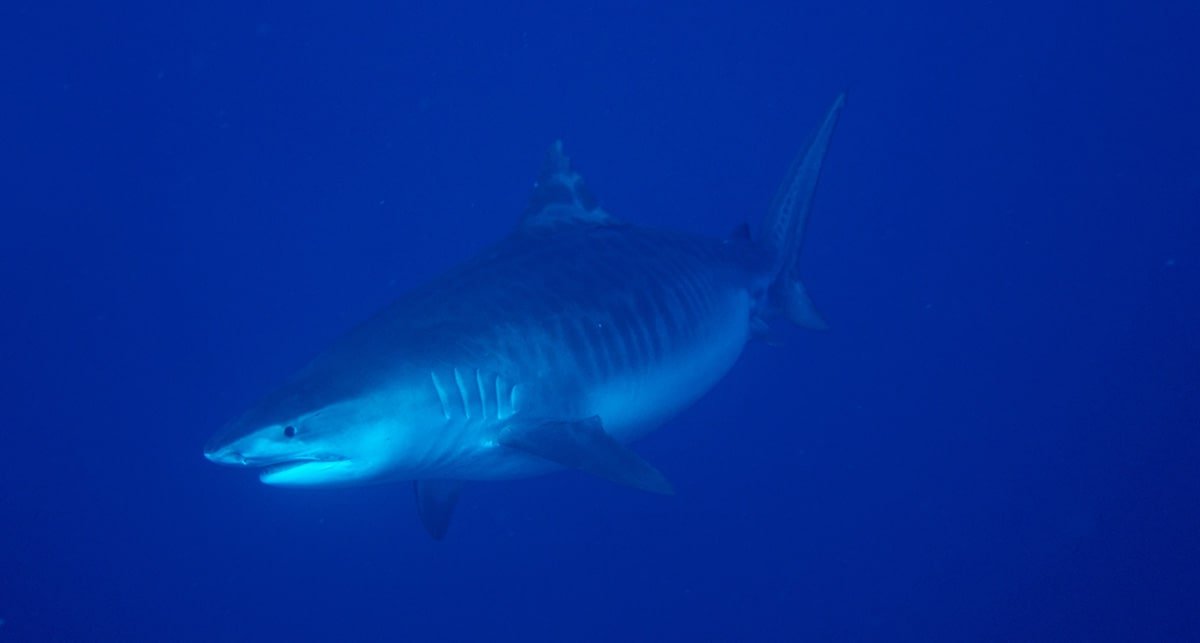The Truth About Sharks—And Shark Attacks—In Maui
PC: Gerald Schömbs / Unsplash
We’re just going to come right out and say it: We get asked a lot about the “S” word.
Sailing? Nope.
Sunsets? Nope.
Snorkeling? Snuba? Scuba?
Nope.
Considering we’ve been offering snorkeling tours in Maui for close to 50 years, it’s common for people to ask us about that “S” word that’s only spoken in whispers:
Sharks.
No one really likes to talk about sharks when it comes to Maui snorkeling tours, but rather than sweep the topic under the rug, or make the same, tired jokes (i.e. “How do you know if there might be a shark here? Dip your finger in the water and taste if it’s salty. If so, there’s a chance there’s a shark here!”), we want to address the issue head on as a means of empowering and educating our guests about myths vs. facts, ocean safety, and some steps we’ve proactively taken as a company to ensure the safety of our guests.
Background
For one thing, sharks have inhabited Hawaii’s waters since long before people were here. From reef sharks to Hammerheads, and Galapagos to Tiger, there are lots of different shark species in Maui—it’s their ocean, after all!
Sharks In Hawaiian Culture
For many Native Hawaiians, sharks are a common ‘aumakua, or family guardian and ancestor. It is said these deceased family members take the form of a shark and are believed to aid and protect living family, such as helping them find fish, or navigate at sea.
For the Hawaiian families who consider sharks their ‘aumakua, they would voluntarily not hunt, or eat, any shark. For others, however, sharks were revered as providers—not protectors—whose teeth would be used to make war clubs and tools, and whose skin was used to make pahu, or drums.
Fearsome sharks like Tiger and Great Whites were known as niuhi and revered for their strength. It’s said that Hawaiian royalty and chiefs would fish and hunt the niuhi for sport, and would acquire their strength by eating their eyes.
It’s even believed that Kamehameha I became such a strong warrior because his mother, when pregnant, specifically asked for the eyes of the niuhi so her child could acquire its strength.
There were even various deities and shark gods, the most notable being Kamohoali‘i—brother of volcano goddess, Pele.
In short, sharks have been a notable part of the Hawaiian culture and throughout Hawaiian history.
Image Courtesy of NTBG
Shark “Seasons” and Hawaii’s History of Shark Culling
According to Native Hawaiian wisdom and chant, shark activity and numbers increase when the Wiliwili tree is in bloom. This native tree shows its flowers in autumn—which is also the Tiger shark pupping season.
While the chances of being bitten by a shark are still extremely small (more on that below), data does show that a disproportionate number of shark bites occur in early fall. The heightened numbers trickle into early winter, when sharks transition from pupping to mating.
From 1959-1976, in an effort to combat a perceived increase in encounters between sharks and humans, the State of Hawaii actually commissioned a shark cull, in which 4,668 sharks (including 280 tiger sharks) were removed from Hawaii’s waters.
Aside from the fact that sharks are an integral part of a healthy marine ecosystem, the cull also took a financial toll, costing the State of Hawaii over $300,000—and it didn’t seem to have any effect.
Follow up data and research showed that the sharks were simply replaced by new ones (because hey—it’s a big ocean out there), and researchers concluded that “shark control programs do not appear to have had measurable effects on the rate of shark attacks in Hawaiian waters, and implementation of large-scale control programs in the future in Hawaii may not be appropriate.”
Facts About Maui Shark Attacks
According to data from the Department of Land and Resources, Maui has experienced 62 documented shark “incidents” since 1995, or an average of 2.2 incidents per year. Out of those 62, there were 13 instances with no bodily injury—just bites out of surfboards or paddle boards. Unfortunately, also out of those 62, there were seven incidents which were fatal.
Still, considering over eight million people visit Maui each year, those numbers are extremely low.
A separate study shows that from 1995-2015, Maui County experienced an average of 1.2 shark bites per 100,000 people.
Statistically, you’re more likely to die walking across the street in Hawaii (1.5-3 fatalities per 100,000 people) than you are to be bitten by a shark, and going purely by the numbers, the most dangerous part of a Maui snorkeling tour is driving to the harbor in the morning. Falling coconuts, ants, sand holes, deer, and even tipped over vending machines all have a greater chance of killing you than a shark attack in Maui.
That said, despite the small numbers and rarity of attacks, data also shows that Maui has a disproportionately higher number of shark incidents than any other island.
Why?
Does Maui Have More Sharks Than Other Islands?
Well—here’s the truth: Sharks love Maui for the same reason that whales do.
Between 2013 and 2014, a team of researchers from the Shark Research Group and the Hawaiʻi Institute of Marine Biology tagged 41 different Tiger sharks and tracked them for over 600 days.
While there was a lot of data pulled from the study, here are some of the general conclusions:
“The movements of tiger sharks captured around Maui and Oahu during the current study were broadly similar to those documented by previous research conducted in Hawaii. Individual tiger sharks tended to utilize a particular ‘core’ island, but also swam between islands and sometimes ranged far offshore (up to 1,400 km – 840 miles). However, the current study also revealed new details of tiger shark habitat use, showing that tiger shark movements were primarily oriented to insular shelf habitat (0-200 m depth) in coastal waters, and that individual sharks utilized well- defined core areas within this habitat.”
“Generally, individual tiger sharks made infrequent (average of 1 visit every 13.3 days) and short (average of 11.8 minutes in duration) visits to shallow ocean recreation sites monitored around Oahu and Maui. Although routinely detected in shallow areas, our tracking data suggest tiger sharks primarily occupy deeper waters (50-100 m depth) when they are over the insular shelf. They are vertically dynamic and make “yo-yo” dives between the seabed and the surface.”
“We found evidence of seasonal migration to Maui by tiger sharks originally captured around Oahu, but no evidence of seasonal inter-island, or offshore, migrations by tiger sharks captured around Maui, most of which were highly site-attached to the Maui Nui insular shelf for the 21 month duration of monitoring. Overall, tiger sharks tagged around Maui typically exhibited greater residency and smaller home ranges than those tagged around other Hawaiian islands. The high residency shown by tiger sharks captured around Maui suggests they are able to obtain all necessary resources (food, mates, pupping habitats) on the extensive Maui Nui insular shelf, which is larger in area than the equivalent shelf habitat of all other Main Hawaiian Islands combined. Seasonal influxes of tiger sharks to Maui waters suggest the extensive shelf habitat surrounding Maui Nui is also attractive to tiger sharks from elsewhere in Hawaii.”
The “Bad” News…Which Is Actually Good News!
Here’s the sentence from that published study that might give people some pause:
“Overall, our results suggest the insular shelf surrounding Maui Nui is an important natural habitat for Hawaii tiger sharks, and consequently, large tiger sharks are routinely and frequently present in the waters off ocean recreation sites around Maui.”
So, basically what they’re saying is, yeah—they’re here. And it’s pretty much all the time. At the end of the day the ocean is their habitat, and we’re really just visitors in their world. To try and sweep it under the rug and pretend that sharks don’t live in the ocean would be simply be untrue.
BUT, here’s the good news:
A paper published in 2018 that analyzed the data from that tracking study give us the most important conclusion:
“The relative rarity of shark bites despite near daily visits by large tiger sharks to high use recreation sites, suggests tiger sharks are mostly disinterested in, or even actively avoiding, people.”
So even though Tiger sharks are frequent visitors to Maui’s coastal areas, they really want little—or nothing—to do with humans sharing their ocean.
It’s kind of like the same mental flow chart you’d use with bears in the woods:
Are they there? Yes.
Will you see one? Probably not.
Should you still take general safety precautions? Yes
Should you stay inside and not go hiking for fear of being attacked? No.
Tips For ENjoying maui’s ocean
So, what are some of those safety precautions when it comes to enjoying Maui’s ocean while knowing sharks exist?
Be part of a group (like a snorkeling tour)—most attacks occur on individuals.
Avoid swimming in brown, murky water—especially after heavy rains.
Avoid river mouths or areas where fresh water feeds directly into the ocean—often times also resulting in murky water.
Avoid swimming solo off shore during dawn and dusk, when sharks are known to be more active.
What Trilogy Is Doing To Keep Our Guests Safe
As the longest running snorkel and sailing company on Maui, our guests’ safety in and out of the water has been our top priority for over 50 years. Also to add peace of mind, in our 50 years of business we’ve never had a large shark encounter while snorkeling.
We have an internal set of protocol and standards that we’ve developed in response to shark sightings, and our Captains are in constant communication with each other, other vessels, and Maui County lifeguards as to the latest updates and conditions.
If it’s been heavily raining for a couple of days, or the water seems too murky, we’ll choose alternate snorkeling locations with better visibility and conditions.
We always snorkel as a group and enforce the “buddy system” while snorkeling. In addition we have a crew member on the boat spotting our guests and water safety crew in the water for additional safety and support.









